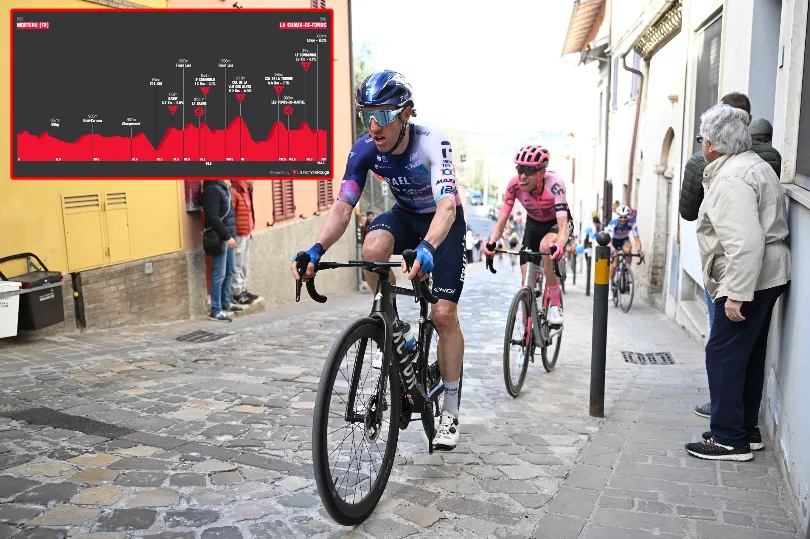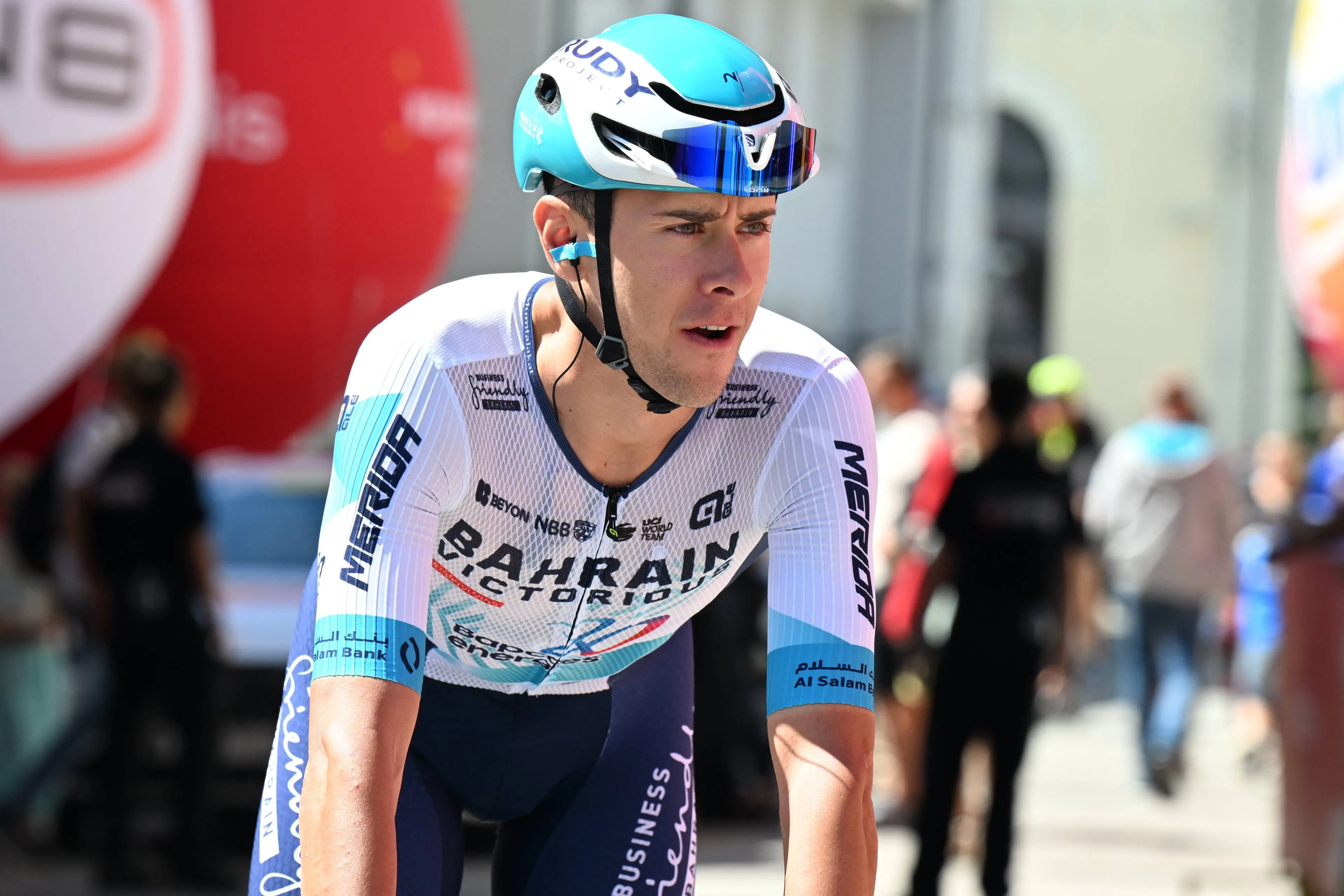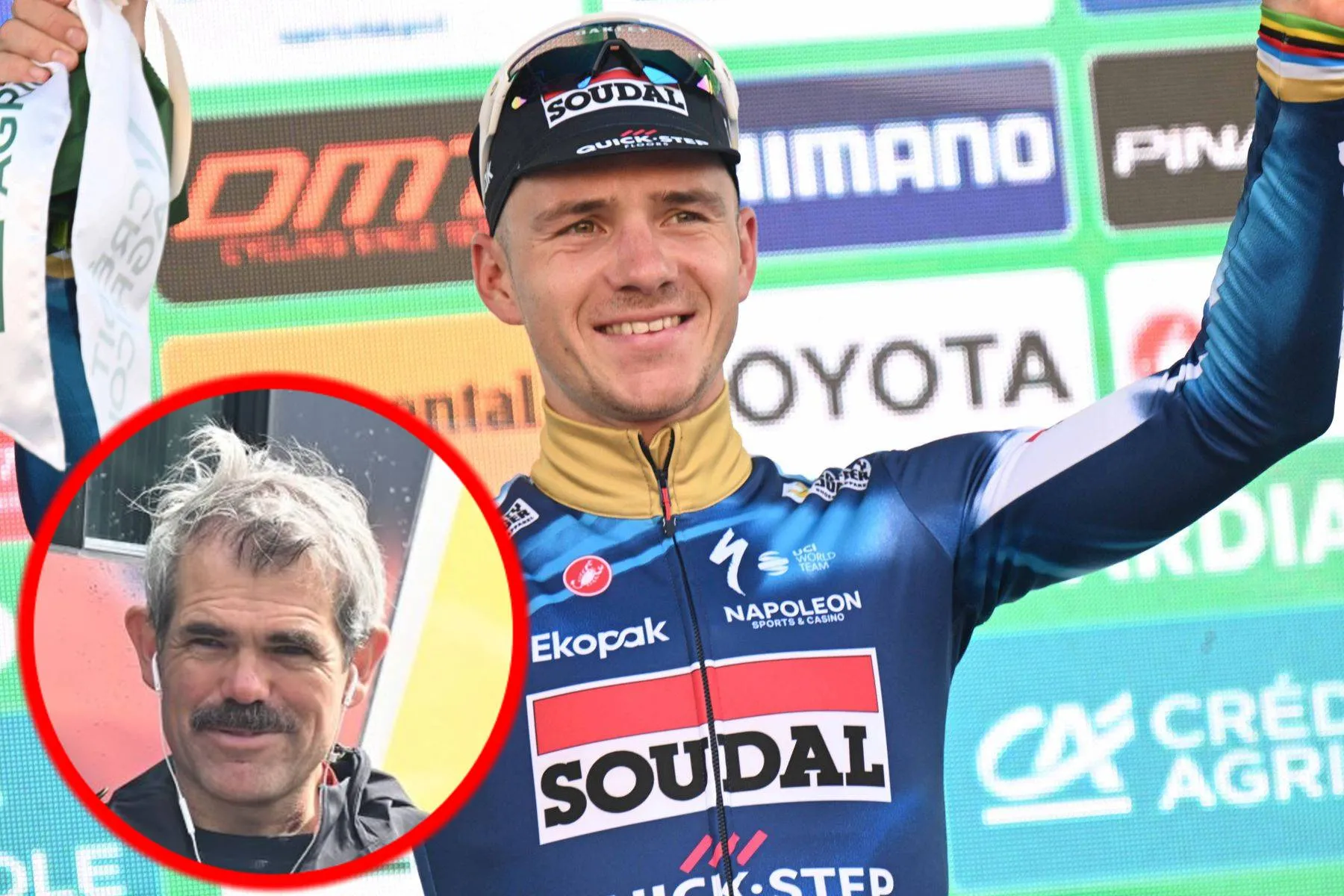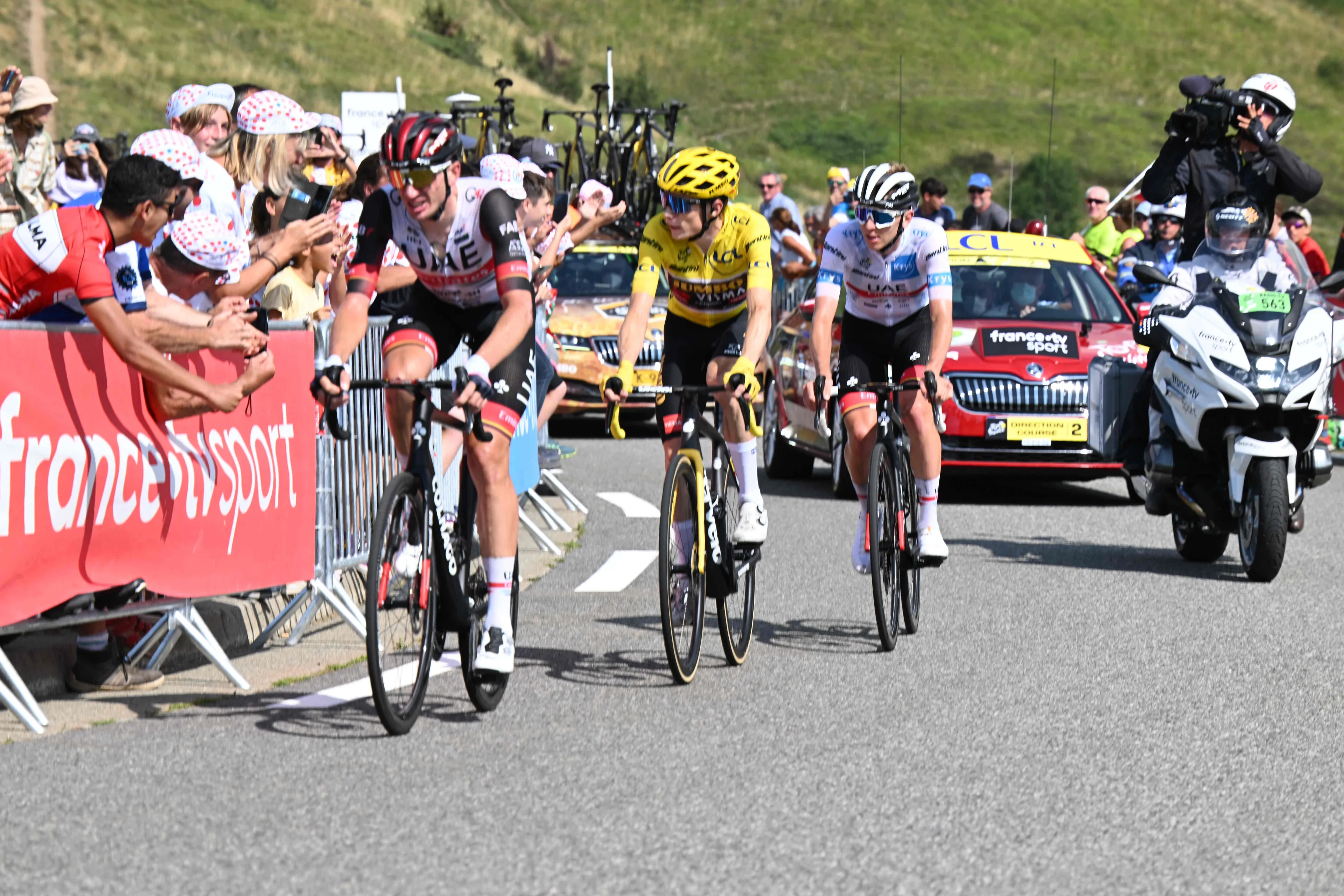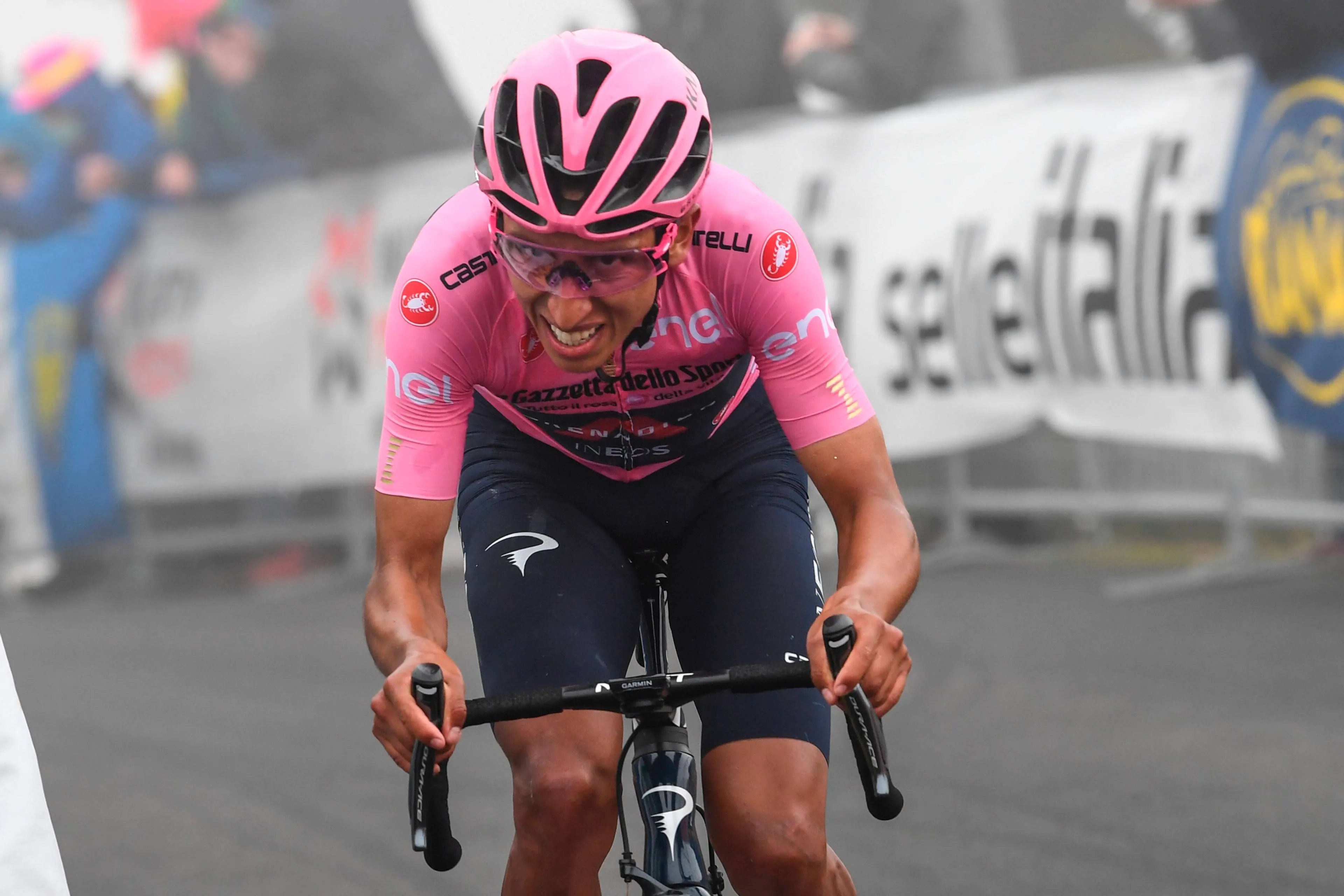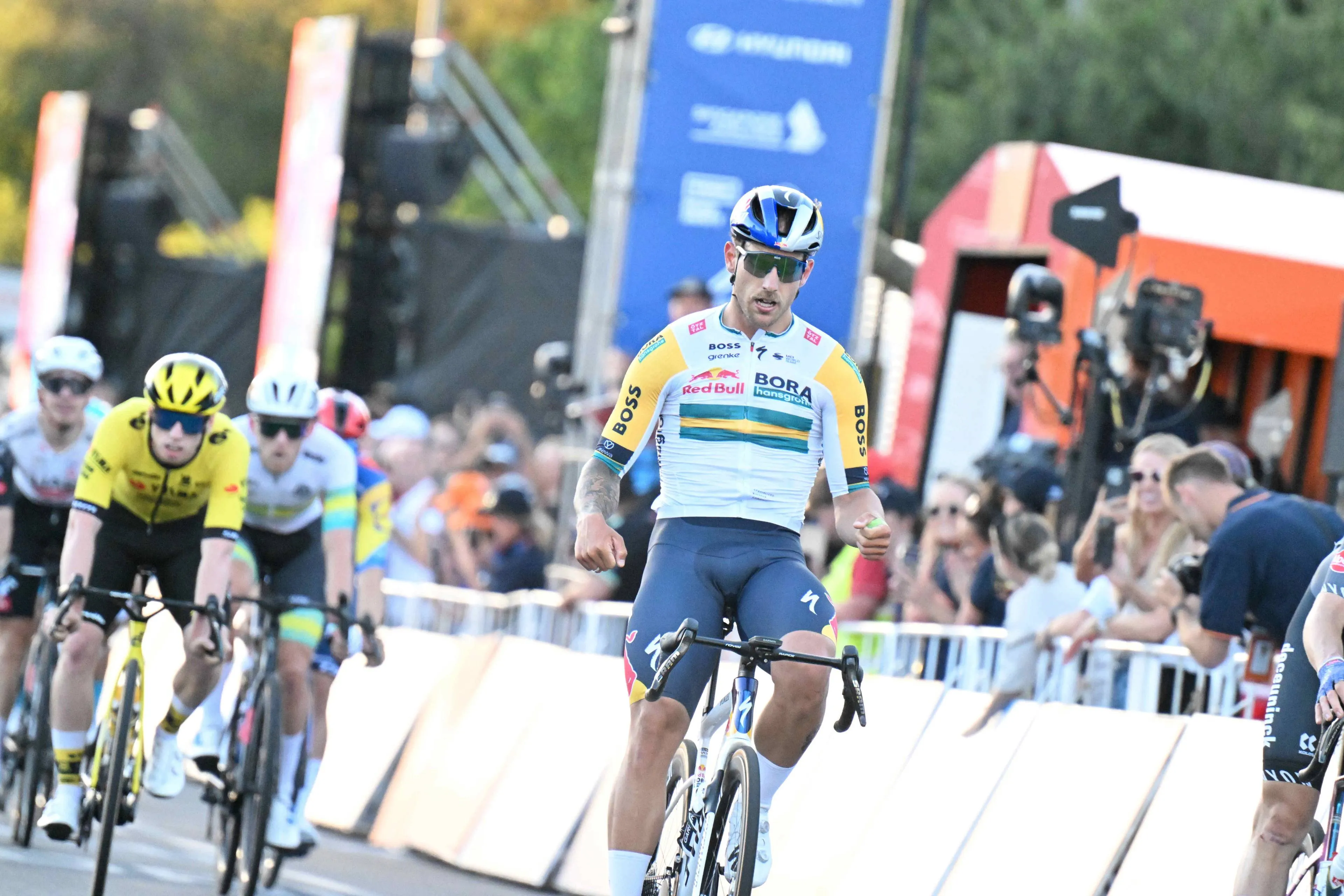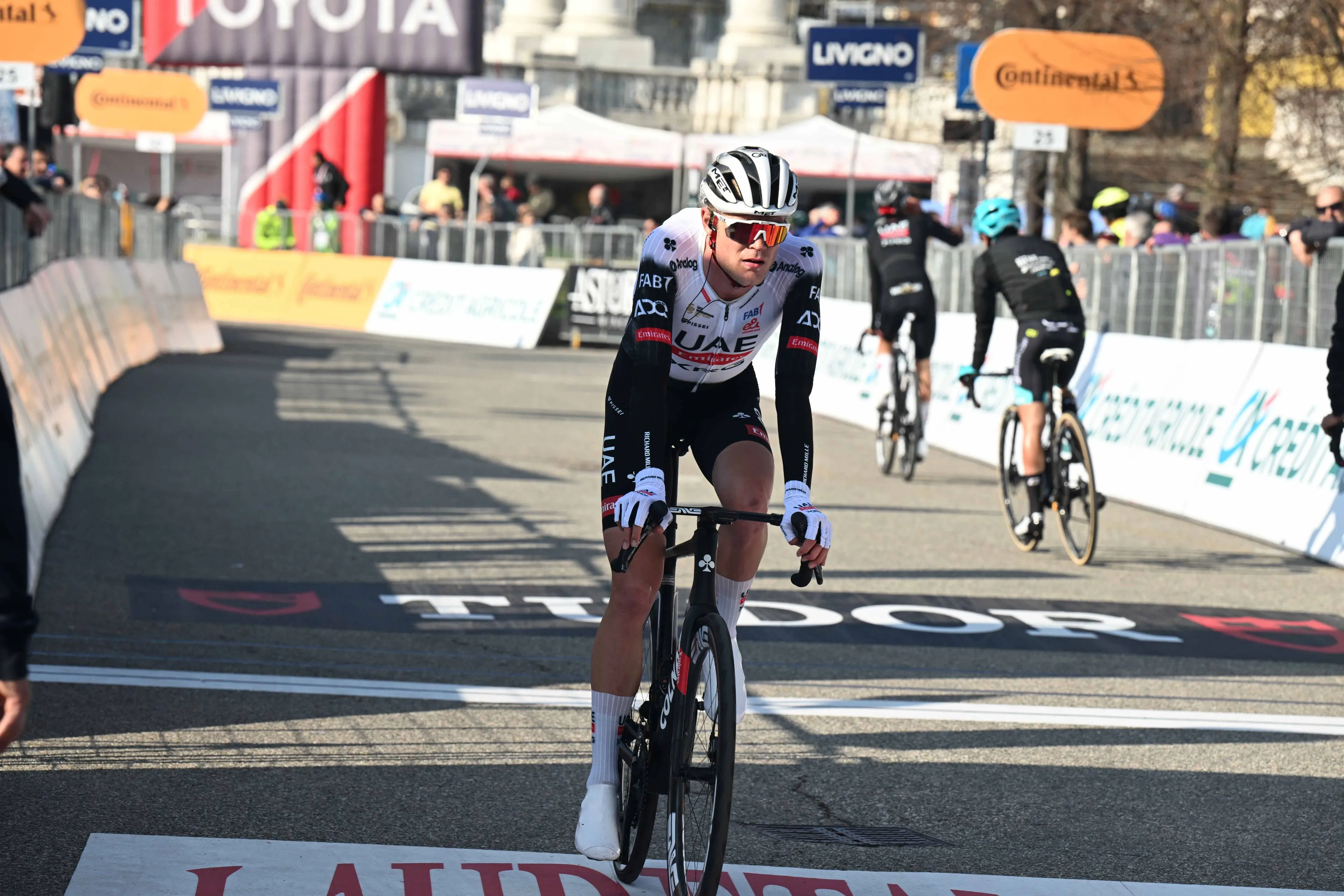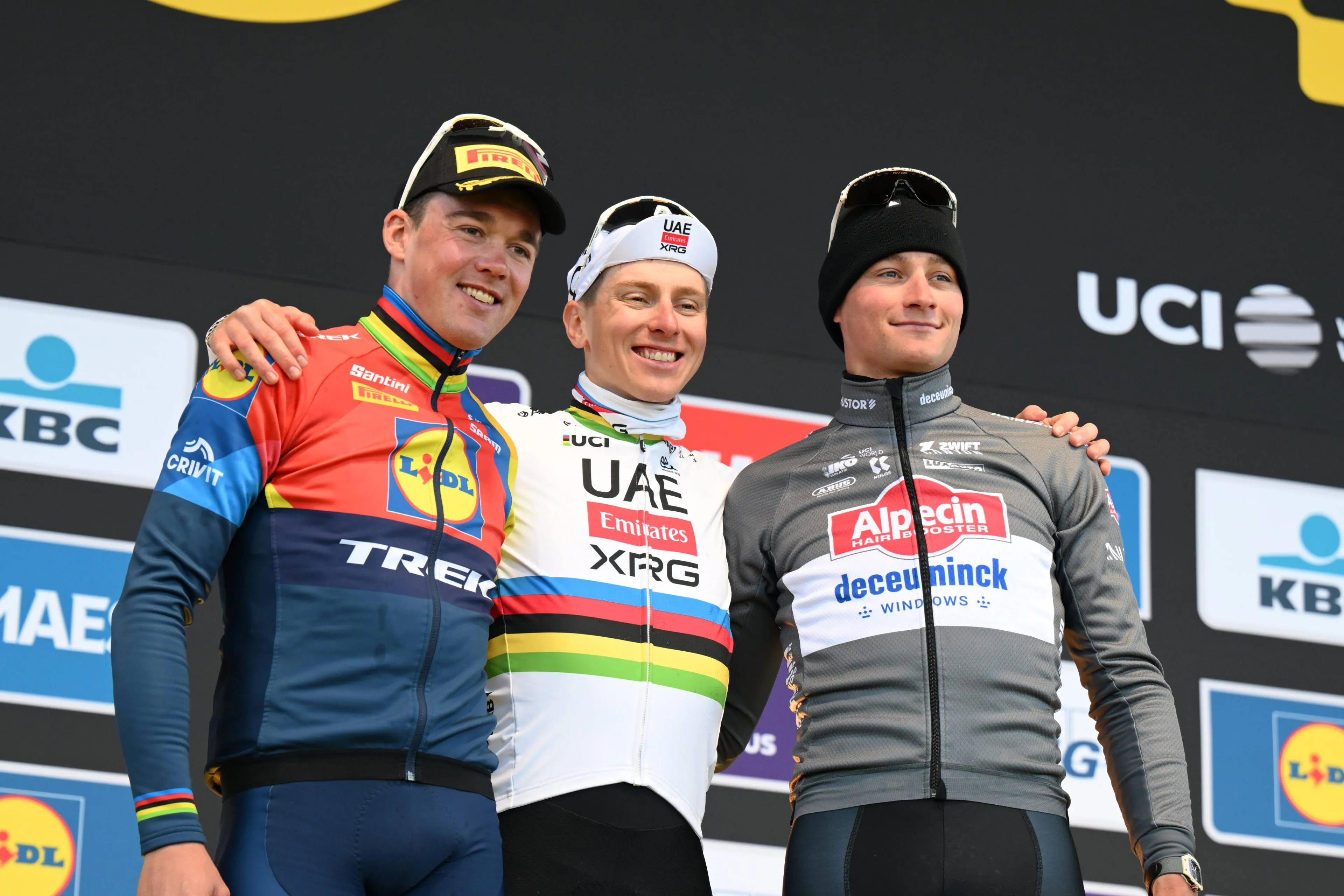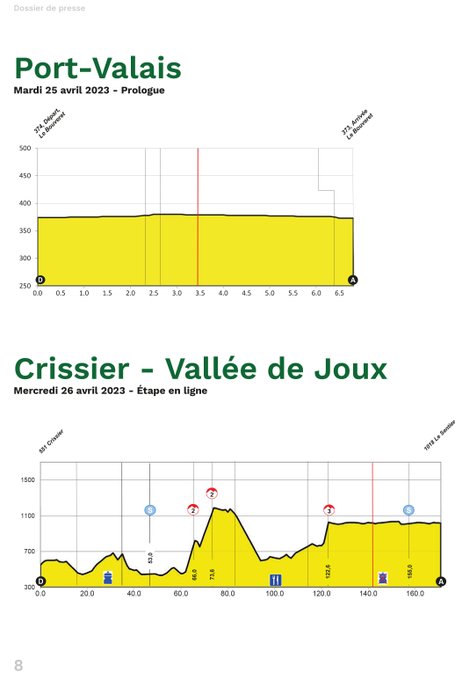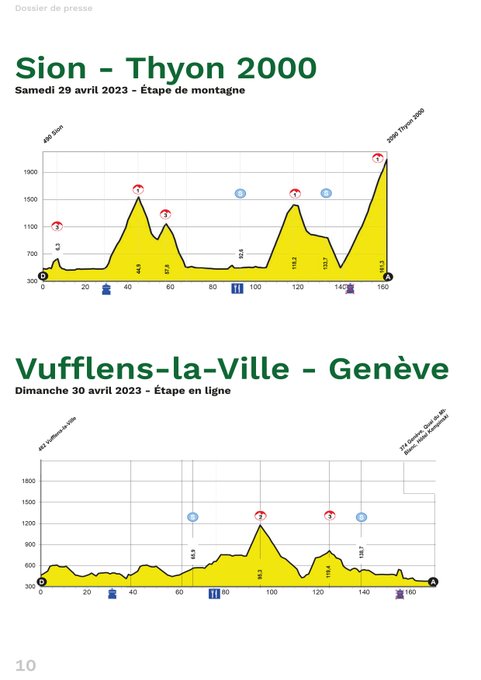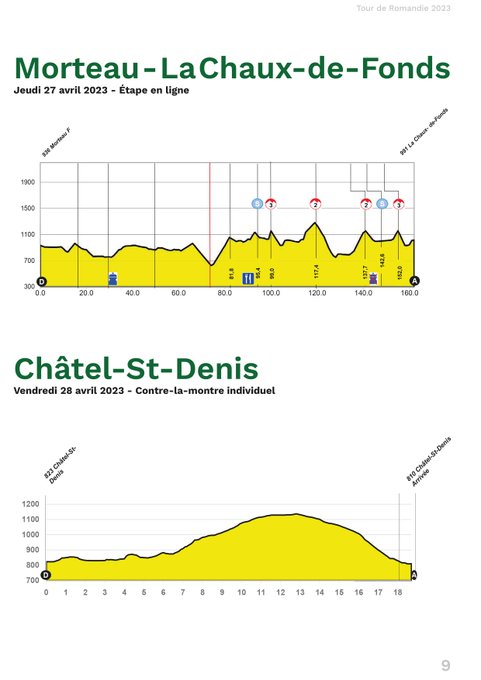
Profiles. From the 25th to 30th April 2023 the peloton will tackle the Swiss roads at the Tour de Romandie, on the French-speaking portion of the central European nation. It is a race that features opportunities for the time-trialists, sprinters, puncheurs and climbers, positioned between the spring classics and the Giro d'Italia.
With six stages on the road, two will be time-trials - with a prologue seeing the first leader's jersey given. The race provides terrain for different types of riders to succeed, however the main plot will be the fight for the overall classification which is set to implode in the Alps.
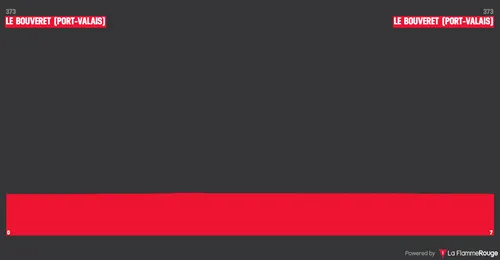
Prologue: Port-Valais - Port-Valais, 7 kilometers
The race starts off with a short prologue in the town of Port-Valais of just under seven kilometers. It won't create big differences, however it will set some order in the GC and provide a fair fight for the first lead of the race. The course is perfect for the powerhouse riders. There are two corners in the route where the riders will stop pedaling. Likely they won't need to use the brakes, it's a flat-out effort where pure speed is all that matters.

Stage 1: Crissier - Vallée de Joux, 169.4 kilometers
Stage one from Crissier to Vallée de Joux will see the riders tackle a rather hilly day, however one that's suited to the sprinters. It features three categorized climbs and no descent following the last, however it should be too far for any team to fully commit to preventing a bunch sprint.
It isn't an usual profile. The first half of the day features quite a tough ascent, that's split into two different categorized climbs. One is 4.5 kilometers long at 8%, and after a very small flat section the second part features 5.3 kilometers at 7.3%. The summit comes with just under 100 kilometers to go so there shouldn't be attacks, however it'll make it difficult to make for an organized chase.
Following a plateau and decent descent the riders head into another ascent which ends with 46.5 kilometers to go, it's 4.5 kilometers at around 6% average gradient. Again not a tough climb, but enough to put some fast men under difficulties if the pace is pushed. There is barely no descent afterwards, and the finale will take place al altitude in the Vallée de Joux.
The sprint finale, if it is to happen, should be normal however. The final corner comes with 2.3 kilometers to go which will string the peloton quite a bit, but from there on there are only a few slight changes of direction. The final kilometer is quite simple and flat, it should lead to a normal sprint.
Read also

Stage 2: Morteau - La Chaux-de-Fonds, 162.7 kilometers
Stage two from Morteau to La Chaux-de-Fonds is a traditional day in Romandie, in which the race will be very open. The climbers have their first opportunity to strike, however it is a day where the puncheurs should have the advantage, whilst the sprinters can't be discounted aswell taking into consideration how the race is ran. Aggressive racing is expected and many riders can succeed.
Three categorized climbs once the second half of the stage starts will make it difficult. The first half of the day is mostly flat, but then in quick succession we have 6.7Km at 6%, 1.5Km at 8.1% and 4.8%. Those will be a warm-up however, the major challenges will come afterwards.
The Col de la Tourne is the toughest climb of the day and summits with 25.5 kilometers to go. It's 4.4 kilometers long at over 7%, featuring gradients of 9% for a whole kilometer towards the end. It is still decently far away from the finish and this early on in the race it shouldn't see the GC fight open up, but it will burn through the peloton and provide a launchpad for attacks.
A third category, the most important climb of the day is likely Le Communal. Those who race Romandie frequently will know it, it's 1.5 kilometers long at 8.1% which is relatively constant. An explosive climb where gaps can certainly appear. It ends with 11.5Km to go and sees afterwards a very fast descent. Right after comes another hilltop which won't let the race settle much, new attacks could come with a whole kilometer at 6%.
It's not brutal but a launchpad, with no descent all the way into the finish. What follows is a pan-flat straightforward finale into La Chaux-de-Fonds for the final 5,5 kilometers.
Read also

Stage 3 (ITT): Châtel-St-Denis - Châtel-St-Denis, 18.8 kilometers
Before the mountains, the fourth stage of the race features over 18 kilometers of individual time-trial. It will be in Châtel-St-Denis that this will take place, it's a long time-trial for the race's size however not a flat one. It's a tricky day where the uphills and downhills will be a serious challenge and many riders can surprise.
It is absolutely a difficult effort to manage, an and unusual time-trial. The first five kilometers are mostly flat, but then lead to an inconsistent ascent where the main gaps of the day will be created. This one will go up to 13% near it's start, however most of the climb is within more gentle slopes where the TT bike will with no doubt be the better option.
The whole ascent is 4.3 kilometers long at 5.7% and summits with 8.5Km to go to the end of the effort. The riders find a plateau right after, before a classic Swiss descent. In the TT bikes it will be treacherous and incredibly nervous. The descent back into Châtel features gradients of over 10%, it's not a mostly straightforward descent with a couple of tricky corners, riders will need a lot of caution, only the final few hundred meters flatten out.
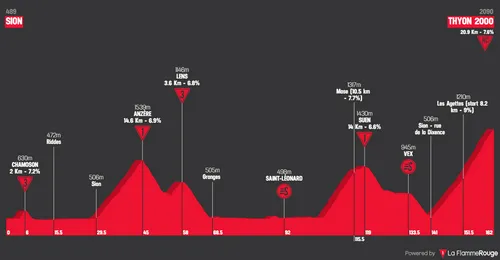
Stage 4: Sion - Thyon 2000, 162 kilometers
Whilst specific details are yet to be given, stage four of the race will be the queen stage. It is a classic aswell at the Swiss race, as the riders tackle the Rhône valley's many ascents, in a stage that culminates on the Thyon 2000 climb, where big gaps are expected. There is a total of over 4300 meters of climbing, and unlike last year the gaps will be made outside of the time-trials - on a day like this there is no hiding.
There is a 2-kilometer climb at over 7% near the start where the breakaway will likely get away. It needs to be a group of strong climbers if there is any ambition of surviving, as the riders will take on three long and difficult climbs within the Rhône valley. The first of which is Anzère, 14.6 kilometers at 7% that end with 117 kilometers to go. Another small ascent quickly follows, but the riders will then prepare for the second main climb.
Suen is another difficult challenge. Officially it's 14Km at 6.6% however the details of the climb hide an uglier truth, which is that it's last three kilometers are almost flat. Most of the ascent is in fact at a constant 8% and sees many hairpins. This one will end with 43 kilometers to go, however the difficulties that are still to come mean most will try to approach it conservatively.
The descent is split into two, however riders will be fighting for positioning into the second one, as it is quite technical and directly leads into the base of the final ascent. The riders have no time to calm down and prepare for Thyon 2000 in the valley, they immediately start climbing up it. However threats of an attack at the base aren't high as it's an effort of over 50 minutes.
The climb in total is 20.9 kilometers at 7.9% and is rather constant, the first half being mostly between 5 and 7%, but the second half featuring three tiny flat sections. The gradients will be higher however overall, exceeding 10% in some sections. The ascent goes all the way into 2090 meters of altitude, it's a proper high-mountain challenge and the gaps created at it's summit could prove decisive for the outcome of the race.

Stage 5: Vufflens-la-Ville - Genève, 169.7 kilometers
The final day of the race sees the most suiting day for the fast men. From Vufflens-la-Ville to Genève, the peloton will tackle a day that features two categorized climbs, however they should not be too hard or close enough to the finish to deal serious damage.
There is a hilltop right at the start of the day where those looking to succeed off a breakaway will try to escape right away and build a strong group. The profile is very suited for an escapee move, featuring these two ascents. Grand Fuey is the first of which, 5.8Km at 7.5% ending with 75 kilometers to the finish, which precede a long and steep descent.
Right as the descent ends, the riders take on the final climb of the day - and the race - which is Le Molard. It's 3.3 kilometers at 6.8%, not something to shrug off. The summit comes with 51 kilometers to the finish line but the summit of the climb is in theory a few kilometers after, as there will be some rolling terrain following.
The final 45 kilometers have a mostly downhill trend, descending 400 meters in altitude. They will be very fast and it'll be hard to bring back a group out front. However the roads won't be technical, and will lead into the center of Genéve. The finale will be fast, mainly with a tricky right-hander with 250 meters to go making it a sprint where being in the first positions is incredibly crucial.
Read also
Estimated start and finish times for Tour de Romandie stages:
Prologue: 14:50 - 17:30CET
Stage 1: 13:20 - 17:30CET
Stage 2: 13:25 - 17:25CET
Stage 3: 14:10 - 17:30CET
Stage 4: 10:55 - 15:50CET
Stage 5: 11:55 - 15:55CET
claps 2visitors 2
Just in
Popular news
Latest comments
- Ah pundits….those who cannot do, fill air time and column inches criticizing those who can… Eddy Merckx wins all the races…cycling is boring and sucks nowCrashjames17-12-2025
- Boring to see a generational talent in your own life time? We should all feel privileged to see it. I certainly do. I feel the same when I see other once in a life time amazing guys in other fields rewriting the record books: Magnus Carlsen in chess and Shoei Ohtani in baseball. And the way they carry themselves.. humble and respected by their peers adds to their appeal.Santiago17-12-2025
- As a current or ex crosser, you should be asking yourself 'what is VDP doing that I'm not', instead of bellyaching that he's winning everything. It's not boring for me to watch an athlete, at the pinnacle of their career, absolutely pulverised the opposition. Whether it be Tiger Woods, Usain Bolt, Roger Federer or indeed our own Tadej Pogacar. Are cyclists really such a bitter breed that we see excellence as boring? Personally, I'm in absolute awe. Here's a question for Mr Wellens, how long will it take before Thibaut Nys becomes boring, after VDP has hung up his wheels?Pogthegoat17-12-2025
- Monotonous? Boring? Pundit? WTF?MajorPayne17-12-2025
- What a backwards step for this team. First the signing of Ayuso and now every chance of Derek Gee.whit2pet17-12-2025
- and also let’s hope he doesn’t have a wife that goes off on the team and riders.mij17-12-2025
- with all due respect to Welsford, what has he won to deserve the title “ace”. he is there in many sprints, but other than some nationals and maybe a 3rd tier race, he isn’t exactly a feared sprinter in the peloton. of course with the right team he could become a winner, but is Ineos the right team? Unlike a Quick-Step, Ineos is not exactly sprinter friendly. they don’t have a track record of developing winners at sprinting.mij17-12-2025
- Let's hope that he doesn't throw his tantrums on his teammates at Visma.
 KerisVroom17-12-2025
KerisVroom17-12-2025 - Hopefully it's for more money than his previous year. That said, he also knows that 2 even younger riders with a potentially higher ceiling could replace him. So he's still fortunate to be part of a team that wins.Veganpotter16-12-2025
- No mention to their best cyclist? Paul Magnier. Save my words.
 PAULO16-12-2025
PAULO16-12-2025
Loading
#TDR2023: voilà les premiers aperçus du tracé. Avec une échappée belle à Morteau (F) pour l'étape des horlogers vers La Chaux-de-Fonds!
Write a comment

